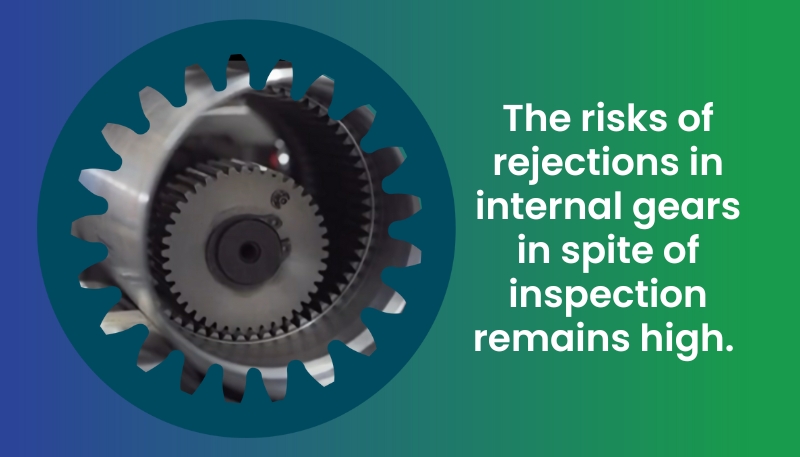Inspecting internal gear quality is a challenging task due to the limited access to datums as specified in the drawings or assemblies. Often, the datum can be the Pitch Circle Diameter (PCD) itself, necessitating the use of gear testers which are not only expensive but also time-consuming, especially when 100% inspection is required. Ensuring the accuracy of internal gear inspections it is crucial to avoid the risk of components getting rejected at customer (OEM) end despite inspection.
Why is Internal Gear Rolling Inspection Challenging?
1. Accessing Inner Surfaces:
Measuring the inner surfaces of gears accurately is difficult due to confined spaces. Traditional methods struggle to reach these areas without disassembly.
2. Defining and Locating the Datum:
Choosing and accurately locating the datum point or surface is critical for accurate measurement. Variations in the datum can lead to significant errors in the inspection results.
3. Alignment and Positioning:
Achieving precise alignment and positioning of the gear relative to the inspection equipment is essential for accurate measurements. Any misalignment can lead to erroneous results.
4. Access to Gear Features:
Challenges in DuB Inspection of Internal Gears
1. Determining Diameter under Balls (DuB):
Finding the DuB is particularly challenging for smaller gears, requiring precise tools and expertise.
2. Probe Navigation:
Maneuvering the probe through the internal structure without causing damage or missing critical areas is complex and demands high precision.
3. Ensuring Consistency:
Manual inspections often lead to inconsistent results due to human error and varying skill levels.
4. Measuring Odd and Even Number of Teeth:
Internal Gear Inspection – How CalibroMeasure helps to solve the issues?
- Enhanced Accuracy: Automated inspections provide precise and consistent measurements, reducing errors.
- Time Efficiency: Speeds up the inspection process, allowing for quicker turnaround times.
- Cost Savings: Minimizes the need for manual labor, lowering operational costs.
- Improved Quality Control: Detects defects early, ensuring high-quality standards are met.
- Data Integration: Seamlessly integrates with digital systems for real-time data analysis and reporting.


